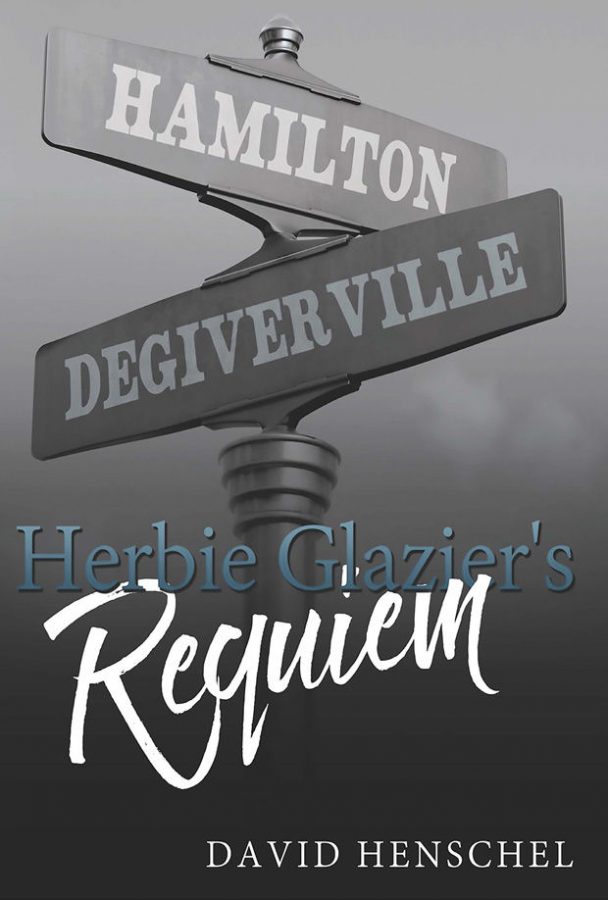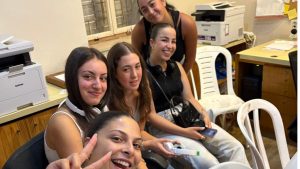Beat back the winter blahs with a book
Published January 11, 2018
The secular old year of 2017 went out with wintery blasts, and the New Year has started with the kind of bone-chilling single-digit temps that makes one long to stay home, toasty warm and curled up with a “hot” book. Below are capsule reviews of three diverse and yet highly readable books, all with a St. Louis connection, to beat back the blahs of winter.
Fans of coming-of-age memoirs are sure to enjoy “Herbie Glazier’s Requiem” by longtime Jewish Light photographer David Henschel (Opus, $25.99 cloth, $15.99, paper, available at bit.ly/Henschel-book). This semi-autobiographical novel is by turns profoundly sad and riotously funny, as the protagonist, Herbert Glazier, after receiving a diagnosis of advanced cancer due to his many years of smoking, hears his biological clock ticking loudly and returns to the neighborhood of his childhood to try and make sense of his often frenetic and hedonistic life before he meets the inevitable end of his days.
Henschel’s vivid recollections of his childhood and teen years reminds one of Henry Roth’s overpowering memories in his novel “Call It Sleep,” or Philip Roth’s teen years as described with his ribald and reckless humor in “Goodbye, Columbus” and “Portnoy’s Complaint.”
“Herbie Glazier’s Requiem” is subtitled “The Story of a Not So Nice Jewish Boy.” One of his earliest memories was of a birthday party he sabotaged by pushing the birthday cake off the table and onto the floor, brazenly in front of the birthday girl’s mom. Herbie’s incorrigible streak would haunt him all of his life.
Henschel’s book is a very St. Louis-grounded novel. The front cover depicts street signs for the intersection of Hamilton and DeGiverville streets, a volatile, multiethnic St. Louis neighborhood where being a Jew could be dangerous and the Glazier children were targets of anti-Semitism. Like many teenage Jews through the years, Herbie joined a street gang for comradeship and protection against neighborhood Jew-haters.
The adult Glazier realizes that part of what made him such a mischievous and cantankerous child may have been genetic, inherited from his father, who was diagnosed with depression and personality disorder, and his grandfather, who had a history of “getting into things he couldn’t get out of, blaming his troubles on his wife and others, not himself.”
At his computer, aware that his days are counting down due to his terminal lung cancer, Herbie exerts a heroic effort to prepare what amounts to an ethical will, to make amends for his youthful and adult indiscretions and to leave his wife and children a memoir of which they can be proud.
At the end of his days, Herbie comes to realize that his life, despite its many challenges and raucous experiences, indeed has meaning, which can be a source of comfort and healing for his family.
A very different kind of book is “The Children of Château de la Hille,” by Sebastian Steiger (Lexographic Press, $18.95, paper, available at lexographicpress.com). While Henschel’s book is a fact-based work of fiction, Steiger’s is a powerful work of nonfiction.
For two harrowing years, Steiger served in the Children’s Aid Program of the Swiss Red Cross in Nazi-occupied France. Steiger, a Swiss German, volunteered to help protect Jewish children from Germany and Austria in the Château de la Hille in the south of France. Steiger arrived as a teacher in 1943. Eager to protect and rescue the Jewish children from certain death at the hands of the Gestapo, Steiger gradually won over the respect and affection of the children and then molded them into a brave and sturdy group.
At any moment, Steiger’s efforts could have ended in tragedy. His memoir has been compared with Anne Frank’s “Diary of a Young Girl,” except that in the case of the Château, a group larger than two families and a dentist were involved. About 100 Jewish refugee children were in Steiger’s protective care, and their story has never been fully told until the English translation of his heart-pounding memoir. Amazingly, 89 of the children survived their ordeal.
After the war, many of the protected children went on to successful careers in the arts and related fields, while Steiger continued to advocate against anti-Semitism. In 1983, Israel honored Steiger as one of the Just Among the Nations.
Henry Massie, a Berkeley-based child psychiatrist who grew up in St. Louis, was so taken with Steiger’s story that he worked with Jean Cavender, director of the St. Louis Holocaust Museum and Learning Center, to have the book translated by Jocelyn Hoy into English so that it could reach the broader audience it deserves. Massie also contributed the book’s preface.
Yet another book, “The Picobe Dilemma,” a novel by Steve Legomsky ($19.95, paper, available at Left Bank Books: http://bit.ly/Legomsky-book), is from yet another genre — make that two genres — literary science fiction and near-future science fiction.
In Legomsky’s words, the protagonist, Jason Stramm, views “living” as simply the sum of one’s experiences: a person’s thoughts, emotions and physical sensations.
Stramm discovers that the human brain permanently stores the memory of all of these experiences. He sets out on a project to extract those memories from the brains of deceased individuals, preserve them digitally and translate them into English.
“By being able to replay all of life’s experiences, repeatedly and forever, he believes he will be creating the practical equivalent of eternal life,” the author writes. “Along the way, however, Jason is tormented by psychological demons that cast growing personal, ethical and religious doubts about the pursuit of eternal life. His story is one of a relatively normal husband and father and professional whose life work steers him along a risky path to possible psychic destruction.”
Legomsky is the John S. Lehmann University Professor Emeritus at the Washington University School of Law.
Not only is the author local, but the entire book is set in the St. Louis area, partly in University City and partly at the Washington University School of Medicine in the Central West End.














